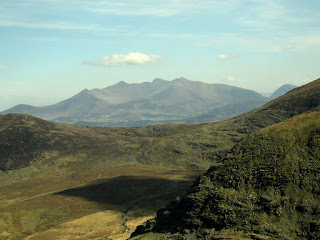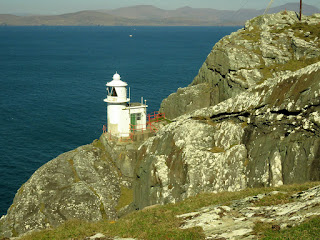It was a travel day with lots of stupid stuff happening. Our Tesco SIM card expired today, but we did not know it, as I missed their text from last night. Just when I went to text the owner of our apartment to let him know when we would arrive, I figured out we no longer had cell service. So we had to find a Tesco in Cork to top up the SIM card, but the GPS was dropped and smashed yesterday so we cannot use the screen very well and have to keep shutting it down. We missed the turnoff to Tesco and then when we did get there, the parking lot was packed at 10:00 am and a total zoo.
Then the cell phone guy that mans the kiosk was late. We got the top-up and then I could text the apartment owner to let him know that we would be late arriving due to the cell phone fiasco. After meeting the owner and dropping off our luggage, we had to take the rental car to a depot in Cork and, as we were driving there, we realized we forgot to fill it with fuel, which is a must or they absolutely hammer you with a fuel charge. We found a gas station which had an awesome car wash, so we washed the car as well, as it was pretty dirty after a month of driving.
We walked from the car rental place toward the centre of Cork and stopped for a cappuccino in a dumpy little breakfast place. The owners thought we were Americans, and then went ballistic when we told them we were Canadians, and a long conversation ensued.
Then we headed to the city centre to the English Market which is a meat/fish lover’s paradise. There were so many butchers there, we made the rounds a few times before we decided which one to stop at. Our main criteria is to select one that is staffed by old men, there are a lot of butchers with old men at this market. We finally stopped and got the best service imaginable and the best pork belly we have ever eaten.
An older woman was buying an entire pork belly, so I asked her what she was doing with it. She had the butcher cut the top bone part off and then he made cuts in the rind and then rolled the whole thing and tied it with string. She is going to roast it for 3 hours to crackling stage and then slice it. It was a thing of beauty and I went on and on about it
Then we got a few more groceries and attempted to find our apartment on foot. As is usual, we totally overestimate how far to go, and we overshot our street by some km, which sounds crazy, but we always do this in cities, and never learn.
We asked a local man where we were and how to get to our street and I handed him our crappy tourist map. He said we were off the map and told us to walk up this huge hill and turn left at the top of the hill, which we did, and his directions were perfect.
The River Lee runs through Cork, so it is basically a valley with steep hills on either side of the river. The people who live here will have legs of steel from walking the hills. The bus strike is still on, so they all are on foot.
When we finally got back to our apartment, we had tea and cooked dinner then went out for some night photography. After that, we went to this incredible bar that was packed, and had a band playing. When that first band finished, another band set up and started playing.
There are locals and visitors from all over the world in the bar, it is just a terrific place and we had a total blast. Then we walked home and people on the streets were just ripped. This is a real party town and there is music playing everywhere and people sing on the streets as they walk home from the bars.
Cork At Night
The History of Ireland Continues...
Anglo-Irish Agreement of 1985
The political process moved along at a slow pace. Finally, there was an agreement which included a role for the Republic of Ireland, where the Republic was given a consulting role in parts of the government of Northern Ireland. As part of the agreement, no change in status of Northern Ireland could take place without the consent of the majority. Also, Britain would not block a united Ireland if that is what Northern Ireland wanted.
The Unionists hated the agreement as they viewed it as a betrayal by the British government. A one day strike was called, which essentially shut down all business and industry in Northern Ireland. Rioting broke out and paramilitary groups killed Catholics.
In the 1990s, the Republic of Ireland was moving on, society had modernized and the very powerful Catholic church was disgraced, due to the abuse of children by priests and the decades long cover-up of such horrendous behaviour. The economy was strong and there was actual immigration for a change. It was Northern Ireland that was not modernizing, as the country continued to be locked in sectarian violence.
Things dragged on and on with little headway being made politically. Then a killing spree erupted from 1990 to 1994 by both the IRA who carried out bombings in London and unionist paramilitary groups killing in Northern Ireland. The war of killing and retaliation had to come to an end. President Clinton defied his own cabinet and the British government, and issued a US visitor’s visa to Gerry Adams, the leader of the Sinn Fein. This got the attention of the IRA and in August 1994, they declared a commitment to the peace process and would discontinue military operations.
However, things did not speed ahead, nothing was settled and the IRA viewed British Prime Minister John Major as a puppet of the unionists. The cease-fire ended when the IRA bombed Canary Wharf in London in February 1996.
In 1997, Tony Blair and his Labour Party won a landslide in the British election. Blair, Clinton and Ahern of the Republic of Ireland were all committed to the peace process and pressed ahead with talks. In July of 1997, the IRA declared a cease-fire.





















































